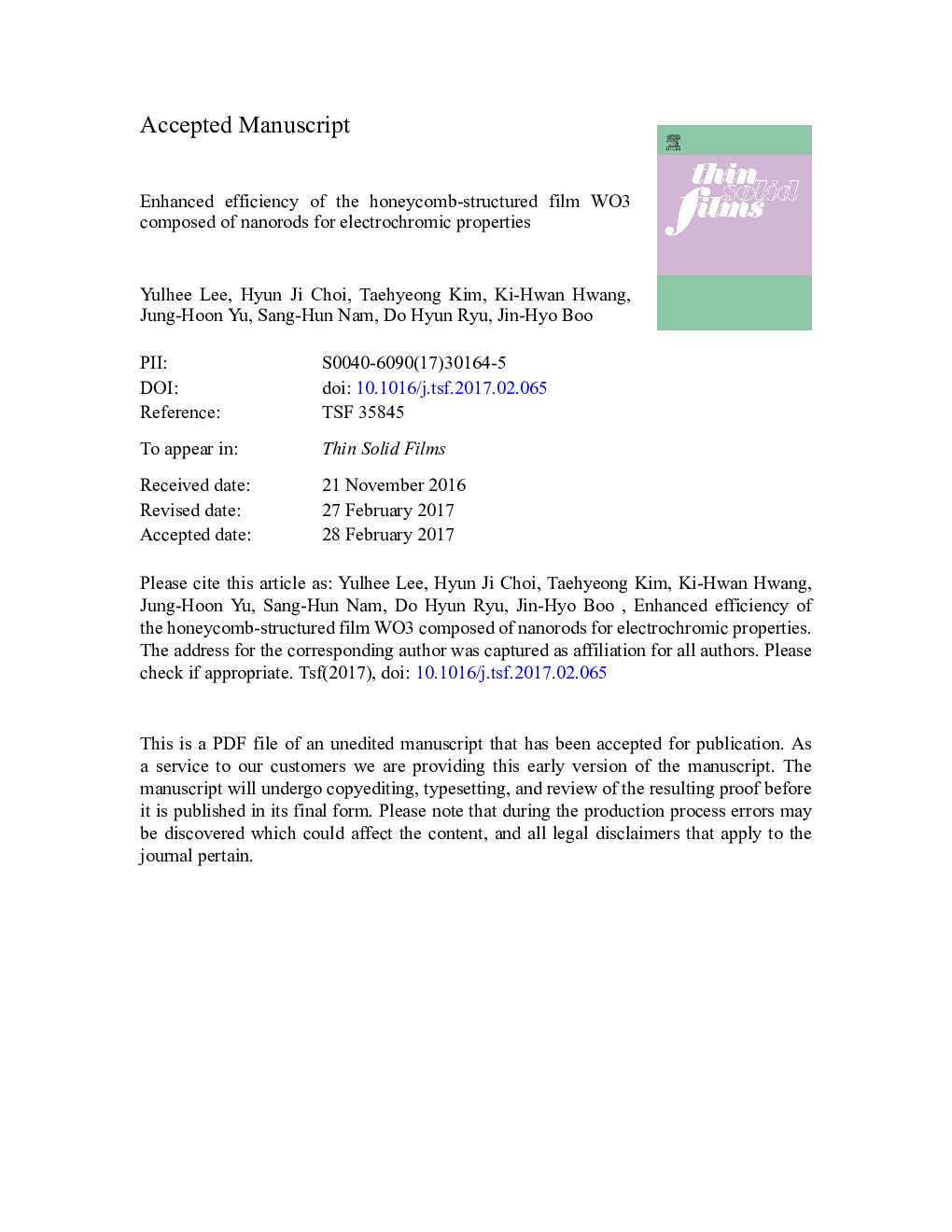| Article ID | Journal | Published Year | Pages | File Type |
|---|---|---|---|---|
| 5465981 | Thin Solid Films | 2017 | 30 Pages |
Abstract
To reduce solar heat and glare from visible light, the color of window panes need to be controlled by electronic energy. Metal oxides deposited on these “smart” windows such as WO3, Nb2O5, and NiO can change the color of the glass by absorbing visible rays. It is important to control the chemical and physical characteristics of the surface of films and to apply a uniformly thin film to obtain a superior product. In this study, we generated templates as nanostructured WO3 monolayers in nanorods with 400Â nm-sized polystyrene (PS) beads. Honeycomb structures were prepared from the well-ordered monolayer template with PS beads that were synthesized by wet chemistry. We investigated the enhanced electrochromic (EC) properties of a honeycomb structured WO3 thin films which were composed of WO3 nanostructures. Nanoarchitectural properties like morphology of films, crystalline phases and the structures of WO3 nanoparticles were examined by Field Emission Scanning Electron Microscopy, X-ray diffraction and Transmission Electron Microscopy. And EC standards such as the variation of transmittance, reaction time and efficiency of redox reactions called by “coloration efficiency” were measured by UV-Vis spectrophotometer, and cyclic voltammetry. The electrochromic reaction rate of honeycomb structured WO3 thin films was fast (coloration time: 5.86Â s and bleaching time: 6.65Â s) but, the variation of light transmission (Î85.04% at 700Â nm wavelength) was comparable to that of flat WO3 film with the similar thickness of about 300Â nm. These results suggested that the surface area enlarged by the honeycomb structure induced by PS templating caused the simultaneous redox reaction in the entire WO3 film.
Related Topics
Physical Sciences and Engineering
Materials Science
Nanotechnology
Authors
Yulhee Lee, Hyun Ji Choi, Taehyeong Kim, Ki-Hwan Hwang, Jung-Hoon Yu, Sang-Hun Nam, Do Hyun Ryu, Jin-Hyo Boo,
